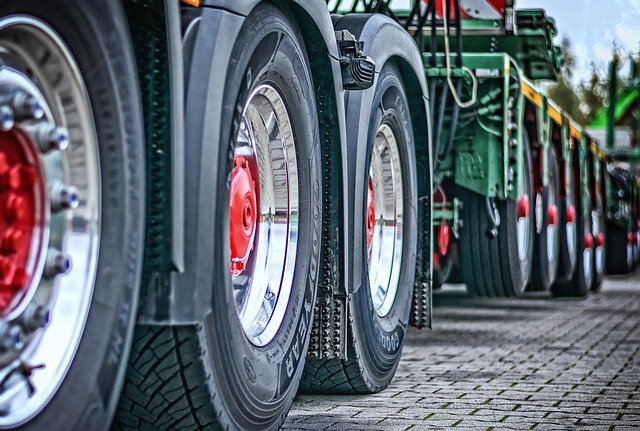Selecting Appropriate Tires for Heavy-Duty Vehicles in Chile
Heavy-duty vehicles operating in Chile face diverse terrain challenges, from the Atacama Desert's harsh conditions to mountainous regions and urban environments. The right tire selection directly impacts vehicle performance, safety, and operational costs. Understanding tire specifications, wear patterns, and safety considerations becomes crucial for fleet operators and individual truck owners navigating Chile's varied landscape and climate conditions.

Heavy-duty vehicles in Chile operate across some of the world’s most challenging terrains, making tire selection a critical decision that affects both safety and operational efficiency. From desert highways to mountain passes and urban delivery routes, the right tires can mean the difference between reliable performance and costly breakdowns.
Choosing the Right Truck Tires
Selecting appropriate tires for heavy-duty vehicles requires careful consideration of multiple factors specific to Chilean operating conditions. Load capacity stands as the primary consideration, as tires must handle the vehicle’s maximum gross weight while maintaining structural integrity. Tread patterns play a crucial role depending on the primary operating environment – deep lugs for off-road mining operations, highway treads for long-distance transport, or all-position designs for mixed-use applications.
Climate considerations become particularly important in Chile’s diverse geography. Northern desert regions demand tires resistant to heat buildup and UV degradation, while southern areas may require enhanced wet-weather performance. Altitude changes throughout the country also affect tire pressure and performance characteristics, requiring tires capable of maintaining stability across elevation variations.
How Truck Tires Wear
Understanding tire wear patterns helps operators maximize tire life and identify potential vehicle issues early. Even wear across the tread surface indicates proper inflation and alignment, while irregular patterns signal problems requiring attention. Shoulder wear typically results from underinflation or excessive cornering speeds, common issues on Chile’s winding mountain roads.
Center wear patterns often indicate overinflation, particularly problematic in desert regions where heat expansion can increase tire pressure beyond recommended levels. Cupping or scalloping wear suggests suspension problems or tire imbalance, conditions that can develop rapidly on Chile’s varied road surfaces. Regular rotation schedules help distribute wear evenly, extending overall tire life and maintaining consistent performance across all wheel positions.
Environmental factors unique to Chile accelerate certain wear patterns. Desert sand acts as an abrasive, gradually wearing tread compounds, while salt exposure in coastal regions can affect tire compounds and wheel assemblies. Mining operations expose tires to sharp rocks and debris, requiring specialized compounds and construction techniques.
Truck Tire Safety Tips
Maintaining tire safety requires consistent monitoring and preventive maintenance practices adapted to Chilean operating conditions. Daily visual inspections should check for cuts, punctures, or embedded debris that could lead to sudden failure. Pressure checks using calibrated gauges ensure optimal performance, particularly important given Chile’s extreme temperature variations that affect tire pressure.
Tread depth monitoring prevents dangerous blowouts and maintains traction on varied surfaces. The legal minimum tread depth may not provide adequate safety margins for Chile’s challenging conditions, making proactive replacement schedules essential. Load distribution verification ensures no single tire carries excessive weight, preventing premature failure and maintaining vehicle stability.
Proper storage practices protect spare tires from UV damage and temperature extremes common in Chilean climates. Emergency preparedness includes carrying appropriate tools and spare tires suitable for the operating environment, whether desert highways or mountain passes.
| Tire Type | Application | Key Features | Estimated Cost Range |
|---|---|---|---|
| Highway Tread | Long-distance transport | Low rolling resistance, even wear | CLP 250,000-500,000 per tire |
| All-Position | Mixed urban/highway | Versatile tread design | CLP 230,000-450,000 per tire |
| Drive Axle | Traction applications | Deep lugs, enhanced grip | CLP 260,000-530,000 per tire |
| Off-Road Mining | Extreme conditions | Cut-resistant compounds | CLP 400,000-980,000 per tire |
| Regional | Medium-distance routes | Balanced performance | CLP 200,000-410,000 per tire |
Prices, rates, or cost estimates mentioned in this article are based on the latest available information but may change over time. Independent research is advised before making financial decisions.
Regular maintenance schedules adapted to Chilean conditions help maximize tire investment returns. Professional inspections can identify potential issues before they become safety hazards or cause expensive failures. Understanding local tire regulations and standards ensures compliance while maintaining optimal performance across Chile’s diverse operating environments.
Proper tire selection and maintenance directly impacts operational costs, safety records, and vehicle reliability in Chile’s challenging environment. By understanding wear patterns, implementing safety protocols, and choosing appropriate tire specifications, operators can achieve optimal performance while minimizing risks associated with tire failure in remote or challenging locations.




